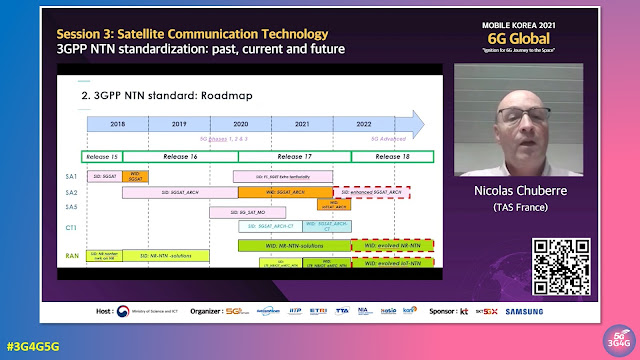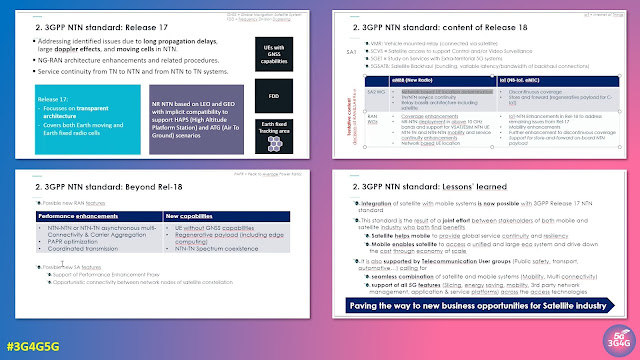Introduction
As the deployment of 5G networks continues to expand globally, the industry is already looking ahead to enhance capabilities through 5G-Advanced features. Among these innovations is the "Store and Forward" (S&F) functionality for Non-Terrestrial Networks (NTN), which represents a significant advancement for IoT applications utilizing satellite connectivity. This feature, specified in 3GPP Release 19, addresses one of the key challenges in satellite communications: maintaining service continuity during intermittent feeder link connectivity.
What is Store and Forward?
Store and Forward (S&F) satellite operation is designed to provide communication services for User Equipment (UE) under satellite coverage without requiring a simultaneous active feeder link connection to the ground segment. This capability is particularly relevant for delay-tolerant IoT services utilizing Non-Geostationary Orbit (NGSO) satellites.
In simple terms, S&F enables satellites to:
- Collect data from IoT devices when they're in range
- Store this data onboard the satellite
- Forward the data to ground stations only when a connection becomes available
This approach fundamentally differs from traditional satellite operations, which require end-to-end connectivity at the moment of transmission.
Normal Operation vs. Store and Forward
To understand the significance of S&F, it's important to contrast it with the "normal/default satellite operation" mode:
Normal/Default Satellite Operation
In the traditional model, signalling and data traffic exchange between a UE with satellite access and the ground network requires both service and feeder links to be active simultaneously. This creates a continuous end-to-end connectivity path between the UE, satellite, and ground network.
Store and Forward Operation
Under S&F operation, the end-to-end exchange of signalling/data traffic is handled as a two-step process that doesn't need to occur concurrently:
- Step A: Signalling/data exchange between the UE and satellite takes place even without the satellite being connected to the ground network. The satellite operates the service link without an active feeder link connection, collecting and storing data from IoT devices.
- Step B: Later, when connectivity between the satellite and ground network is established, the stored communications are transmitted to the ground network.
This approach bears similarities to existing store-and-forward services like SMS, where end-to-end connectivity between endpoints isn't required simultaneously.
Technical Requirements for Store and Forward
The implementation of S&F relies heavily on regenerative satellite payloads, as opposed to transparent payloads. Here's why this distinction matters:
Regenerative Payload Advantages
A regenerative payload with an onboard gNB (next-generation NodeB) offers several critical capabilities:
- Onboard Processing: The ability to process and store data directly on the satellite
- Reduced Dependency: Less reliance on continuous ground segment connectivity
- Enhanced Resilience: The NTN can function even if the feeder link is temporarily severed
- Performance Improvements: Significant reductions in roundtrip time for all procedures between the gNB and UE
For S&F functionality, all or part of the core network functions must be placed on the satellite together with the gNB. This architectural change enables a new level of autonomous operation for satellite networks.
Applications for IoT
The Store and Forward capability is especially suited for delay-tolerant or non-real-time IoT applications. Examples include:
- Environmental Monitoring: Collecting sensor data from remote locations
- Asset Tracking: Monitoring the status of assets in transit through areas with limited ground infrastructure
- Agricultural Sensing: Gathering data from widely distributed sensors in rural areas
- Maritime and Offshore IoT: Supporting connected devices at sea where direct connectivity to ground networks is inconsistent
These use cases benefit from S&F's ability to ensure data is eventually delivered without requiring constant connectivity, which is particularly valuable for battery-powered IoT devices that need to conserve energy.
Relationship to Delay-Tolerant Networking
The concept of Store and Forward is well-established in delay-tolerant networking (DTN) and disruption-tolerant networking domains. These networking paradigms are designed to work in challenged environments where conventional protocols may fail due to long delays or frequent disruptions.
In the 3GPP context, S&F can be compared to SMS service, which doesn't require end-to-end connectivity between endpoints but only between the endpoints and the Short Message Service Centre (SMSC), which acts as an intermediate node handling storage and forwarding.
Future Implications
The introduction of S&F functionality represents an important step toward what Ericsson has called "data centers in the sky." By placing not just radio access network functions but also core network capabilities in space, we're moving toward satellite networks that can operate with greater autonomy and resilience.
This development also aligns with broader industry efforts to create truly global coverage through integrated ground and space networks. Combined with inter-satellite links (ISL), S&F enables more flexible and resilient network architectures that can maintain service even when individual links are unavailable.
Conclusion
Store and Forward represents a significant advancement in 5G-Advanced satellite communications, particularly for IoT applications. By decoupling the timing requirements between service link and feeder link communications, S&F enables more resilient, energy-efficient, and cost-effective deployment of IoT devices in remote or challenging environments.
As 3GPP Release 19 specifications continue to develop, we can expect to see this capability integrated into commercial satellite IoT offerings, expanding the reach of 5G networks to truly global coverage. While initially targeted at IoT applications, the architectural principles of S&F could eventually extend to other services, bringing us closer to ubiquitous connectivity across terrestrial and non-terrestrial networks.
Related Posts
- The 3G4G Blog: Tutorial Session on Non-Terrestrial Networks (NTNs) and 3GPP Standards from 5G to 6G
- Connectivity Technology Blog: Tutorial Session on Current Trends and Key Challenges of Satellite communications
- Free 6G Training: ATIS Webinar on 'Introduction to 3GPP Release 19 and 6G Planning'
- The 3G4G Blog: Low Latency Power Saving with Low Power-Wake Up Signal/Receiver (LP-WUS/LP-WUR)
- The 3G4G Blog: Small Data Transmission (SDT) in LTE and 5G NR
- The 3G4G Blog: 3GPP TSG RAN and TSG SA Release-19 Workshop Summary
- The 3G4G Blog: Are there 50 Billion IoT Devices yet?
- 3G4G: An Quick Introduction to 3GPP















